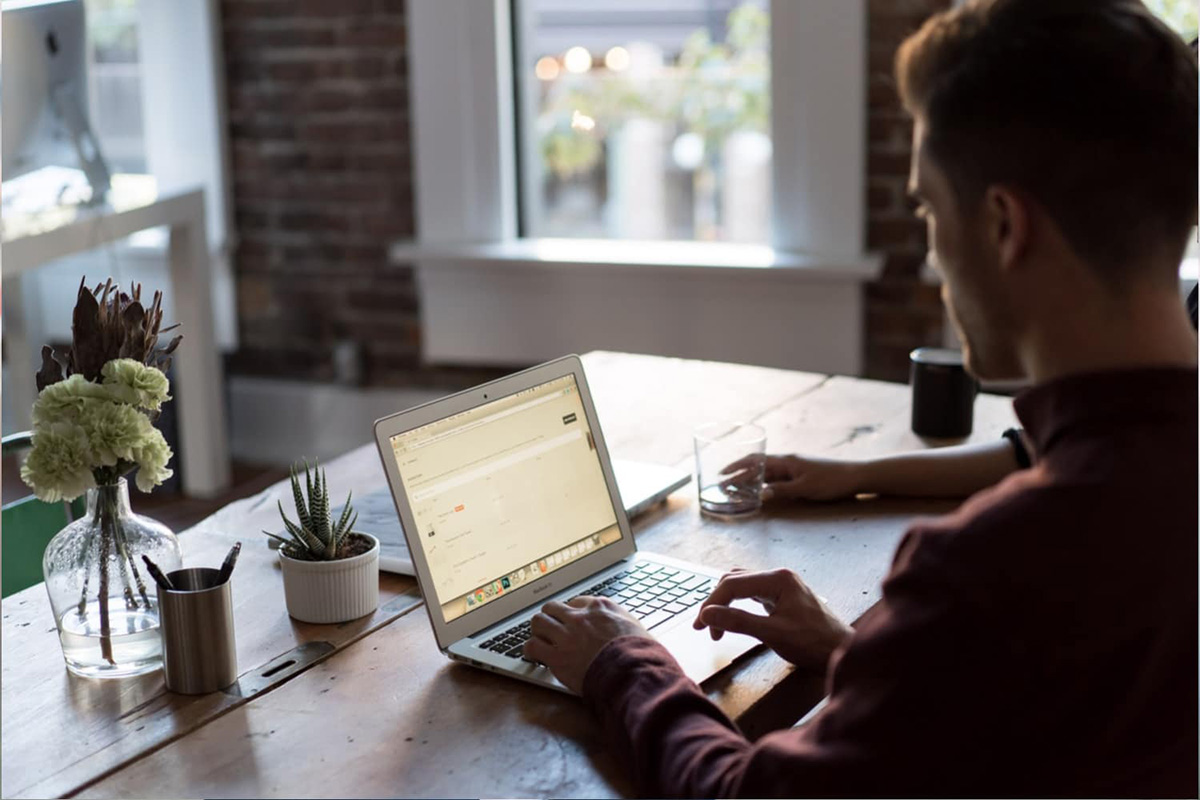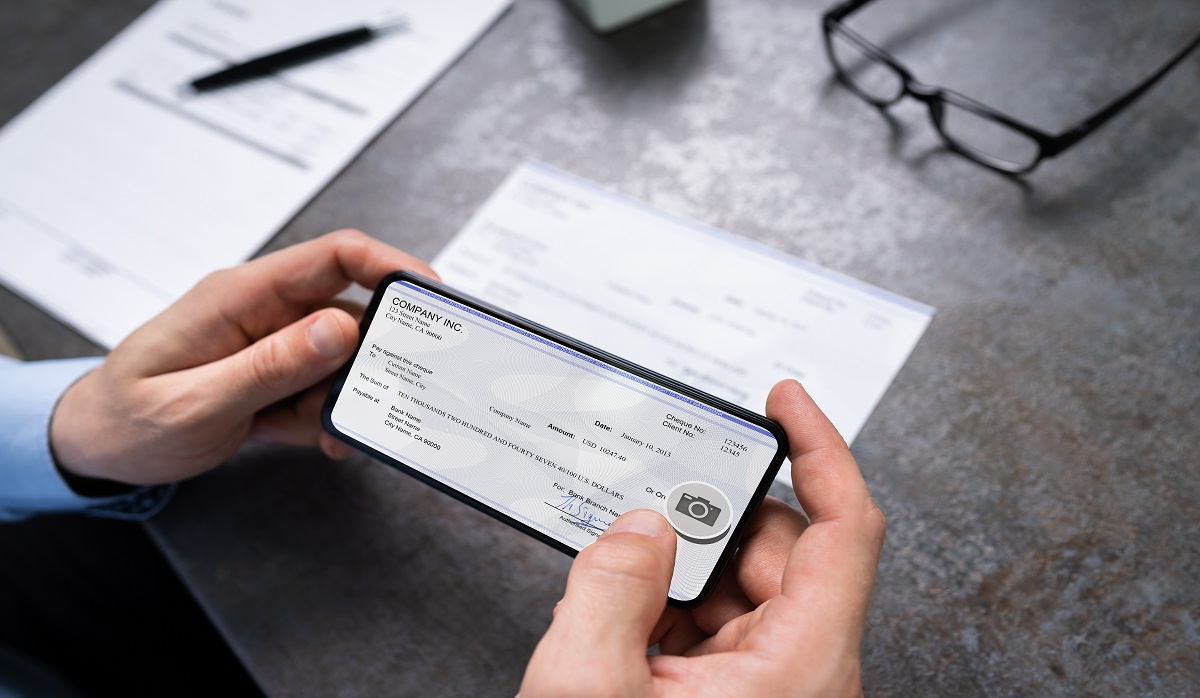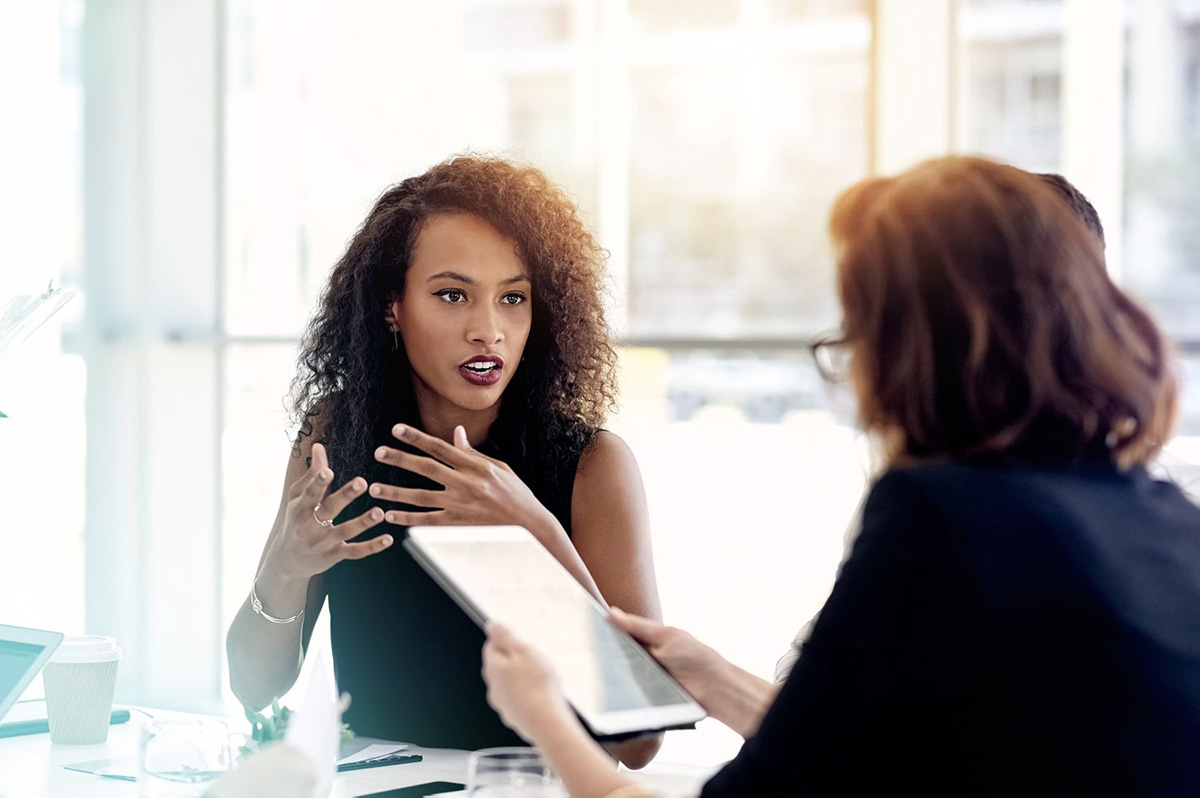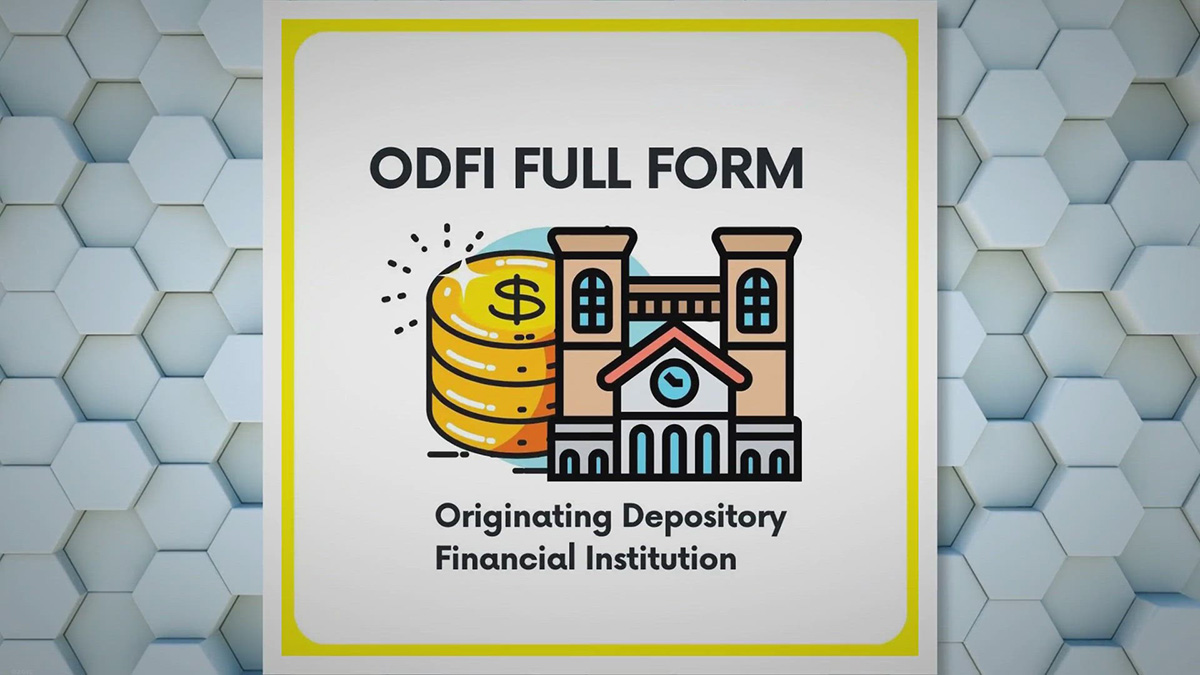

Finance
What Does Banking On Me Mean
Published: October 11, 2023
Learn what it means to have the financial industry banking on you. Discover the power of finance and how it can transform your life.
(Many of the links in this article redirect to a specific reviewed product. Your purchase of these products through affiliate links helps to generate commission for LiveWell, at no extra cost. Learn more)
Table of Contents
Introduction
When it comes to managing our finances, we often rely on banks and financial institutions to provide us with the necessary tools and services. But what if there was a different approach? What if we could take control of our own financial future and truly bank on ourselves?
Banking on Me is a concept that empowers individuals to become their own source of financial security and growth. It’s about taking charge of your money and making decisions that align with your goals and values. With Banking on Me, you become the CEO of your financial life, making strategic investments in yourself and creating a strong foundation for future success.
Traditional banking revolves around depositing money into a savings or checking account and relying on the bank to manage it for you. While this can provide a certain level of convenience, it often comes with limitations and restrictions. Banking on Me offers a fresh perspective and a new way of thinking about how we handle our finances.
By adopting the Banking on Me mindset, you can unlock a world of opportunities and benefits. It encourages self-reliance and financial independence, allowing you to take control of your financial destiny. Whether you want to save for a big purchase, invest in your education, start a business, or retire early, Banking on Me gives you the tools and mindset to make it happen.
What is Banking on Me?
Banking on Me is a revolutionary approach to personal finance that centers around the idea of becoming your own banker. It’s about shifting the focus from relying on traditional financial institutions to empowering individuals to take control of their own financial well-being.
At its core, Banking on Me is about building financial freedom and security through self-directed banking practices. Instead of depositing your money into a traditional bank account, you invest in yourself and your own ventures. This can include various strategies such as creating an emergency fund, saving for long-term goals, starting your own business, or investing in assets that generate passive income.
One of the key principles of Banking on Me is the concept of leverage. It involves using your assets, skills, and knowledge to generate more wealth and opportunities. Instead of relying on traditional loans and credit, you become your own lender and borrower. This allows you to have more control over your financial decisions and eliminates the need to rely on external institutions for funding.
Banking on Me also emphasizes financial education and self-reliance. It encourages individuals to learn about personal finance, investment strategies, and wealth-building techniques. By acquiring this knowledge, you can make informed decisions that align with your financial goals.
Another important aspect of Banking on Me is the mindset shift it requires. It’s about taking responsibility for your financial future and being proactive in managing your money. This means prioritizing savings, eliminating debt, and making conscious spending decisions. It’s about recognizing that you are in charge of your own financial destiny and taking the necessary steps to achieve your goals.
Overall, Banking on Me is a powerful concept that empowers individuals to become their own financial advocate. It encourages you to think outside the box, challenge conventional financial norms, and create a path to financial freedom that aligns with your unique circumstances and aspirations.
Benefits of Banking on Me
Banking on Me offers a multitude of benefits that can transform your financial journey and lead to long-term success. Here are some key advantages of adopting the Banking on Me mindset:
- Financial Independence: By banking on yourself, you gain financial independence and the ability to make decisions based on your own goals and values. You are no longer tied to the limitations and restrictions of traditional financial institutions.
- Control Over Your Finances: Banking on Me puts you in the driver’s seat of your financial life. You have the power to choose where your money goes and how it’s used. This allows for greater flexibility and customization to meet your specific needs.
- Elimination of Interest Payments: Traditional banking often involves borrowing money and paying interest to the bank. With Banking on Me, you can reduce or eliminate interest payments by becoming your own lender. This can lead to significant savings over time.
- Opportunities for Higher Returns: By investing in yourself and your own ventures, you have the potential to generate higher returns compared to traditional banking products. This can accelerate your wealth-building journey and create new opportunities for financial growth.
- Building Wealth and Assets: Banking on Me allows you to focus on building your own wealth and acquiring assets that can appreciate in value. Instead of solely relying on savings accounts with minimal interest, you can invest in assets such as real estate, stocks, or businesses that have the potential for higher returns.
- Flexibility and Adaptability: Traditional financial institutions often have rigid policies and procedures. Banking on Me provides the flexibility to adapt to changing circumstances and adjust your financial strategies as needed. This adaptability is essential for navigating the ups and downs of the financial landscape.
- Empowerment and Personal Growth: Taking control of your own finances and becoming your own banker fosters a sense of empowerment and personal growth. It requires you to develop financial knowledge, discipline, and decision-making skills, leading to personal and professional development.
These are just a few of the many benefits of Banking on Me. It enables you to break free from financial constraints, pursue your dreams without relying on traditional institutions, and create a path to financial independence and success.
How Does Banking on Me Work?
Banking on Me operates on the principle of self-reliance and taking control of your financial future. Here are the key components of how Banking on Me works:
- Self-Directed Banking: Instead of depositing your money into a traditional bank account, Banking on Me encourages you to invest in yourself and your own ventures. This can include creating an emergency fund, starting a business, investing in real estate, or other assets that generate passive income.
- Strategic Savings: Banking on Me emphasizes the importance of saving money strategically. This involves setting aside a portion of your income for both short-term needs and long-term goals. It’s about having a plan in place to accumulate wealth over time.
- Leverage and Asset-Based Financing: With Banking on Me, you become your own lender and borrower. Instead of relying on external institutions for funding, you utilize your assets, skills, and knowledge to generate wealth and opportunities. This involves using leverage to maximize your financial resources.
- Education and Financial Literacy: Banking on Me promotes financial education and literacy. It encourages individuals to learn about personal finance, investment strategies, and wealth-building techniques. By acquiring this knowledge, you can make informed decisions and maximize the benefits of Banking on Me.
- Building Multiple Income Streams: Banking on Me encourages diversifying your sources of income. This can involve starting a side business, investing in stocks or real estate, or creating passive income streams. By generating multiple income streams, you increase your financial stability and reduce reliance on a single source of income.
- Eliminating Debt: Another key aspect of Banking on Me is the focus on eliminating debt. By freeing yourself from high-interest debt, you free up more resources to invest in yourself and your financial goals. This can involve developing a debt repayment plan and adopting strategies to minimize or eliminate debt.
- Long-Term Wealth Building: Banking on Me is a long-term approach to building wealth. It’s about creating a solid financial foundation and making strategic investments that appreciate over time. This requires patience, discipline, and a long-term mindset.
Banking on Me works by shifting the focus from traditional banking to self-directed financial practices. It empowers individuals to take control of their finances, invest in themselves, and create a path to financial independence and success.
Steps to Start Banking on Me
If you’re interested in embracing the Banking on Me philosophy and taking control of your financial future, here are the steps to get started:
- Educate Yourself: Begin by educating yourself about personal finance, investment strategies, and wealth-building techniques. Read books, attend seminars, and follow reputable financial experts to gain a solid foundation of knowledge.
- Set Financial Goals: Determine your financial goals and establish a clear vision for your future. Whether you want to save for retirement, start a business, or pay off debt, having defined goals will guide your financial decisions and help you stay focused.
- Create a Budget: Develop a budget that aligns with your financial goals. Track your income, expenses, and savings to ensure that you’re living within your means and making progress towards your objectives. Include savings and investments as a regular part of your budget.
- Build an Emergency Fund: Start by establishing an emergency fund to cover unexpected expenses. Aim for a fund that can support three to six months’ worth of living expenses. This will provide a financial safety net and prevent you from relying on high-interest credit in times of crisis.
- Pay off High-Interest Debt: Prioritize paying off high-interest debt, such as credit card balances, as it can hinder your financial progress. Develop a debt repayment plan and allocate extra funds towards paying down these debts. As you eliminate debt, you’ll free up more resources to invest in yourself and your financial goals.
- Invest in Yourself: Focus on personal growth and acquiring new skills that can enhance your earning potential and financial prospects. This can include enrolling in educational courses, attending workshops, or obtaining certifications that are relevant to your field of interest.
- Start a Side Business: Consider starting a side business or freelancing to generate additional income. This can provide a source of extra revenue that can be reinvested in yourself and your financial goals.
- Diversify Your Investments: Explore various investment opportunities to diversify your portfolio and reduce risk. This can include investing in stocks, real estate, mutual funds, or other assets that align with your risk tolerance and long-term financial objectives.
- Continuously Monitor and Adjust: Regularly review your financial situation and adjust your strategies as needed. Keep track of your progress, make necessary tweaks, and stay informed about market trends and opportunities.
Remember, adopting the Banking on Me mindset is a journey. It requires commitment, discipline, and a long-term perspective. By taking these steps, you can start taking control of your financial future and set yourself up for long-term success.
Examples of Banking on Me Success Stories
Banking on Me has transformed the lives of countless individuals who have taken control of their finances and achieved remarkable success. Here are a few inspiring examples of people who have embraced the Banking on Me philosophy:
1. Entrepreneurial Success: Maria, a working professional, decided to start her own online business as a side project. By investing in herself and leveraging her skills and knowledge, she was able to build a successful e-commerce store selling handmade products. Today, her business generates a consistent stream of passive income, allowing her to become financially independent and pursue her passion full-time.
2. Early Retirement: John and Sarah were determined to retire early and live a life of financial freedom. They adopted the Banking on Me mindset and focused on saving aggressively. They minimized expenses, eliminated debt, and invested in low-cost index funds. Through disciplined saving and smart investing, they were able to retire in their early 40s, living a fulfilling life without the worry of financial constraints.
3. Real Estate Wealth: Mark, a savvy investor, decided to pursue real estate as his primary investment strategy. He used the concept of self-directed banking to acquire multiple rental properties. By utilizing leverage and careful property selection, Mark was able to build a portfolio that generated substantial cash flow and long-term appreciation. Today, he enjoys a comfortable passive income stream, providing financial stability and the freedom to pursue his passions.
4. Career Transition: Sarah was feeling unfulfilled in her corporate job and decided to make a career change. She used the Banking on Me approach to invest in her personal and professional development. Sarah enrolled in online courses, attended industry conferences, and built a strong network. Through her dedication and newfound skills, she successfully transitioned into a fulfilling career in a different industry, experiencing not only financial success but also personal growth and happiness.
5. Debt-Free Journey: Anthony was burdened with significant student loan debt from his college education. Fed up with interest payments and financial stress, he took a proactive approach by adopting the Banking on Me mindset. Anthony created a solid budget, reduced unnecessary expenses, and allocated extra income towards his debt repayment. With determination and discipline, he paid off his student loans in a fraction of the expected time, freeing himself from the burden of debt and gaining financial freedom.
These success stories demonstrate the transformative power of Banking on Me. By taking control of their financial destiny, these individuals were able to pursue their dreams, build wealth, and create a life of financial independence and satisfaction.
Common Misconceptions about Banking on Me
While Banking on Me offers numerous benefits and opportunities, there are some common misconceptions that may deter individuals from embracing this approach. Let’s address these misconceptions and provide clarity:
- It requires a large amount of capital: One common misconception is that Banking on Me requires a significant amount of capital to get started. While having more money certainly helps, it’s not a prerequisite. In fact, Banking on Me is about using your existing resources, skills, and knowledge to generate wealth and opportunities. It’s about being strategic with your finances, regardless of the initial amount you have.
- It’s too risky: Another misconception is that Banking on Me is a high-risk endeavor. While any investment carries some level of risk, the key to success lies in thorough research, proper planning, and diversification. By educating yourself, seeking professional advice, and being disciplined in your financial decisions, you can mitigate risks and increase your chances of success.
- It’s only for entrepreneurs: Many individuals believe that Banking on Me is exclusively for entrepreneurs or business owners. While starting a business is one way to implement this approach, Banking on Me can be applied to all aspects of personal finance. It’s about taking control of your savings, investments, and financial decisions, regardless of your profession or career path.
- It’s time-consuming: Some people may think that Banking on Me requires an excessive amount of time and effort. While it’s true that building wealth and financial independence takes commitment and dedication, it’s important to remember that the benefits far outweigh the effort. With proper planning and effective financial management, you can integrate Banking on Me principles into your daily life without sacrificing too much time or energy.
- It’s not regulated: Another misconception is that Banking on Me is not regulated or protected like traditional banking systems. While it’s true that self-directed banking comes with its own set of responsibilities, it also provides a sense of control and autonomy. By being well-informed and making sound financial decisions, you can safeguard your investments and protect your financial interests.
It’s crucial to distinguish between misconceptions and the reality of Banking on Me. By understanding the principles and benefits, as well as addressing these common misconceptions, you can make informed decisions about adopting this approach to improve your financial well-being.
Is Banking on Me Right for You?
Now that you have a better understanding of what Banking on Me entails, you may be wondering if it’s the right approach for you. While Banking on Me can offer many benefits, it’s essential to consider your own financial situation, goals, and preferences before diving in. Here are some factors to consider:
Financial Goals: Evaluate your short-term and long-term financial goals. Consider whether Banking on Me aligns with your aspirations. If you are seeking financial independence, control over your finances, and the opportunity to build wealth on your terms, Banking on Me may be a suitable approach for you.
Time and Commitment: Assess your willingness to invest time and effort into managing your own finances. Banking on Me requires research, education, and continuous monitoring of your financial situation. If you’re willing to devote time to learn and make informed decisions, Banking on Me can be a rewarding and empowering journey.
Risk Tolerance: Evaluate your risk tolerance and comfort level with investing in yourself and your ventures. Banking on Me may involve taking risks, such as starting a business or investing in assets. Consider how comfortable you are with these risks and whether you have the resilience to navigate the ups and downs of entrepreneurship and investment.
Financial Knowledge: Assess your current financial literacy and knowledge. While you don’t need to be a financial expert to embark on Banking on Me, having a basic understanding of personal finance, investments, and wealth-building strategies is beneficial. Determine if you are willing to educate yourself and seek professional advice to make informed decisions.
Flexibility: Consider your ability to adapt and be flexible in your financial strategies. Banking on Me requires the ability to adjust your plans and approaches as the financial landscape changes. If you’re open to exploring new opportunities, adapting to challenges, and continuously learning, Banking on Me can provide you with the flexibility to evolve and grow.
Support and Guidance: Reflect on the availability of resources, support, and guidance that you may need on your Banking on Me journey. This can include financial advisors, mentors, support groups, or educational materials. Evaluate whether you have access to the necessary resources or if you are willing to seek them out to enhance your chances of success.
Ultimately, the decision of whether Banking on Me is right for you depends on your individual circumstances, goals, and mindset. It’s a personal choice that requires self-reflection, research, and careful consideration. If you are ready to take control of your financial future, embrace self-reliance, and unleash your potential for financial success, Banking on Me can be a powerful and transformative approach.
Conclusion
Banking on Me represents a paradigm shift in personal finance, empowering individuals to take control of their financial future and become their own source of wealth and security. By embracing this mindset, you can pave the way for financial independence, freedom, and long-term success.
Throughout this article, we have explored what Banking on Me means, its numerous benefits, and how it works. We’ve discussed the steps to start banking on yourself, shared inspiring success stories, debunked common misconceptions, and provided guidance on deciding if this approach is right for you.
Regardless of your financial goals or current circumstances, adopting the Banking on Me mindset can offer a path to financial empowerment. It encourages self-reliance, strategic planning, and a focus on building wealth and assets that align with your aspirations. Banking on Me grants you the freedom to make financial decisions that are truly in line with your goals and values.
However, it is essential to remember that Banking on Me requires commitment, continuous learning, and a long-term perspective. It may involve taking calculated risks, acquiring financial knowledge, and adapting your strategies as circumstances change.
By taking the first steps to educate yourself, set financial goals, create a budget, and invest in yourself and your ventures, you can embark on a journey toward financial freedom and success.
So, are you ready to bank on yourself? Are you ready to take control of your financial future and create a life of abundance, security, and fulfillment? If so, embrace the Banking on Me philosophy and unlock the potential within you to achieve your financial dreams.














